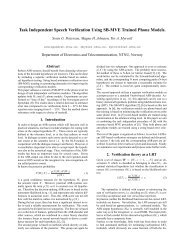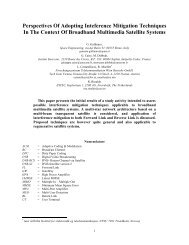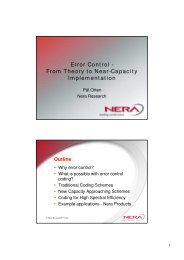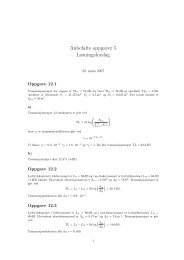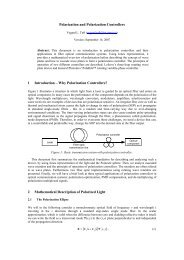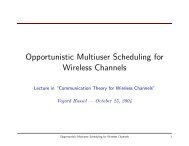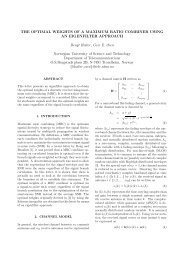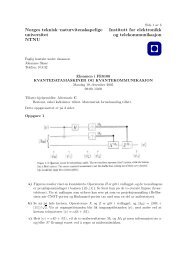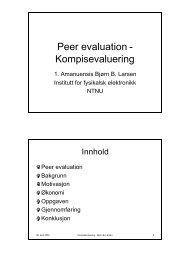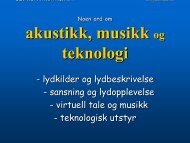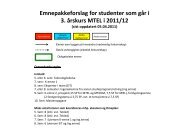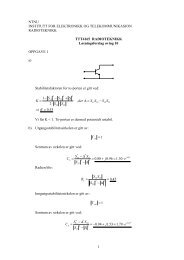Lab 4 Laser - Institutt for elektronikk og telekommunikasjon - NTNU
Lab 4 Laser - Institutt for elektronikk og telekommunikasjon - NTNU
Lab 4 Laser - Institutt for elektronikk og telekommunikasjon - NTNU
You also want an ePaper? Increase the reach of your titles
YUMPU automatically turns print PDFs into web optimized ePapers that Google loves.
1.1 <strong>Laser</strong> safety 4<br />
welders, movie projectors, searchlights and special tv photo lamps.<br />
Living tissues can be damaged when they absorb light because of excessive<br />
(even explosive!) heating or by photochemical changes. Examples of heat damage<br />
include skin burned by concentrated sunlight or laser emission, and retina<br />
lesions caused by laser beams. Examples of photochemical damage includes<br />
sunburn and cataracts caused by excessive exposure to ultraviolet light from<br />
the sun or from arc welders.<br />
When you look at a strong hal<strong>og</strong>en bulb you feel that it is strong light and<br />
that you should not continue looking at it (you would see green spots <strong>for</strong> a couple<br />
of days if you continued long enough). The laser light is more concentrated<br />
and has a typical spot diameter of 300µm which, when it gets focused, makes<br />
a spot that is 10µm on your retina. Let’s now compare the light intensity of a<br />
5mW laser-pointer to the intensity from the image of the sun focused on your<br />
retina.<br />
Sun retina intensity =<br />
Power<br />
Spot size =<br />
3 · 10−3 W<br />
π(75 · 10 −6 = 180 kW/m2<br />
) 2<br />
<strong>Laser</strong> retina intensity =<br />
Power<br />
Spot size = 5 · 10−3 W<br />
π(5 · 10 −6 = 63.6 MW/m2<br />
) 2<br />
In other words: the laser retina intensity is 350 times the sun retina intensity. It<br />
is not recommended to stare at the sun, and with these calculations, I’d suggest<br />
that you don’t even think of staring into the laser light. It will burn your retina<br />
rather quickly.<br />
During this lab exercise you will handle a laser tube which is capable of<br />
delivering up to 5mW of coherent light at wavelengths around 632nm(red). It<br />
is dangerous to look into the laser beam so do not do that. You shall also wear<br />
welding glasses when working with the laser. This is to be sure that no one<br />
gets black spots on their retina due to focused laser light.



